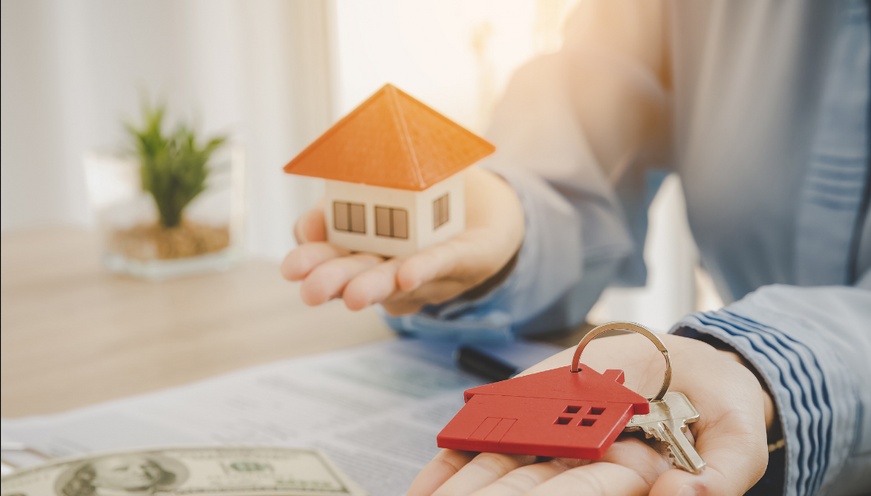Introduction: A Path to Wealth Through Real Estate

Leveraging mortgages to purchase rental properties is a powerful wealth-building strategy for 2025 and beyond. With rising demand for rentals in diverse markets—think urban hubs like Miami or growing suburbs—this guide explores how to use mortgage financing to create a profitable real estate investment portfolio. By balancing risks and maximizing returns, you can turn properties into steady income streams and long-term equity. Let’s dive into the steps, strategies, and considerations to make it happen.
Understanding Investment Property Mortgages
Key Differences from Primary Residence Mortgages
Investment property mortgages differ from those for your own home. Expect:
-
- Larger down payments: 20-25% minimum (e.g., $50,000-$62,500 on a $250,000 property).
-
- Higher interest rates: 0.5-0.75% above owner-occupied rates (5.5% vs. 4.75% in 2025).
-
- Stricter qualification: Lenders scrutinize income and credit more closely.
-
- More documentation: Proof of reserves and rental potential is key.
Common Mortgage Types for Investors
-
- Conventional Mortgages: Ideal for investors with 680+ credit and steady income. Conforming to Fannie Mae/Freddie Mac, they often offer rates like 5.5% on a $200,000 loan.
-
- Portfolio Loans: Private lenders hold these, offering flexibility for multiple properties—perfect if you’re past conventional limits.
-
- Commercial Mortgages: For 5+ unit buildings, tied to property cash flow, with 10-15-year terms and balloon payments.
Qualifying for Investment Property Mortgages
Financial Requirements
Lenders want:
-
- Credit score: 680+ for top rates; 620 minimum.
-
- Debt-to-income ratio (DTI): Below 45%—your debts shouldn’t exceed 45% of income, including new mortgage.
-
- Cash reserves: 6+ months of payments per property (e.g., $12,000 for a $2,000 monthly cost).
-
- Income history: Stable job or strong tax returns showing rental income.
Property Requirements
The property must:
-
- Show rental potential (e.g., $2,000/month in a hot market).
-
- Meet lender standards—appraised value, clear title, zoned correctly.
Strategic Mortgage Planning
Down Payment Strategies
-
- Traditional Savings: Slow but safe—$60,000 saved over years keeps risk low.
-
- Home Equity: Tap $50,000 from your primary home’s equity to buy a $200,000 rental, accelerating growth.
-
- Partnership Capital: Split a $300,000 property with a partner, halving your $75,000 down payment.
Cash Flow Analysis
Total Monthly Costs: For a $200,000 loan at 5.5% (30 years):
-
- Principal & interest: $1,135
-
- Taxes: $250
-
- Insurance: $100
-
- Maintenance: $150
-
- Management (8%): $160
-
- Vacancy (5%): $100
-
- Total: $1,895
Expected Rental Income: Research shows $2,200/month locally—net cash flow of $305 after costs.
Portfolio Growth Strategies
The BRRRR Method
-
- Buy: A fixer-upper for $150,000.
-
- Rehabilitate: Spend $30,000 to boost value to $220,000.
-
- Rent: Lease at $1,800/month.
-
- Refinance: Pull out $170,000, repay original $120,000, and reinvest the $50,000.
-
- Repeat: Scale up methodically.
Scaling Considerations
-
- Property Management: Self-manage one property; hire pros at 5+ units (8-10% of rent).
-
- Financing Limits: Conventional caps at 10 mortgages—explore portfolio loans thereafter.
Risk Management
Property-Level Risks
-
- Due Diligence: Inspections, title checks, and market analysis (e.g., 3% rental growth projected).
-
- Insurance: Landlord policies ($1,200/year), liability ($500), and rent loss coverage.
Portfolio-Level Risks
-
- Diversification: Mix condos, single-family homes, and suburban vs. urban units.
-
- Financial Buffers: Keep $20,000 cash and a 40% DTI cap.
Tax Considerations
Deductible Expenses
-
- Mortgage interest ($13,620/year on $200,000 loan).
-
- Taxes, insurance, repairs, and management fees.
Tax Planning
-
- 1031 Exchanges: Swap properties tax-free to scale.
-
- Depreciation: Write off $7,000/year on a $200,000 home (27.5-year schedule).
Exit Strategies
-
- Refinancing: Cash out $50,000 from a $250,000 property to fund more buys.
-
- Disposition: Sell at peak value or offer seller financing for extra income.
Conclusion: Building a Sustainable Portfolio
Success in rental property investing hinges on careful planning and smart mortgage use. Focus on cash flow—aim for $200-$500/property monthly—while diversifying and managing risks. Start with one property in 2025 and grow methodically.
Action Steps
-
- Assess finances: $50,000 saved, 720 credit.
-
- Research markets: 3% rental yield areas.
-
- Connect with lenders: Secure a 5.5% rate.
-
- Define criteria: $200,000 homes, $300+ cash flow.
-
- Plan: 5 properties in 5 years.
-
- Build a team: Realtor, inspector, manager.
-
- Begin: Buy your first rental this year.
